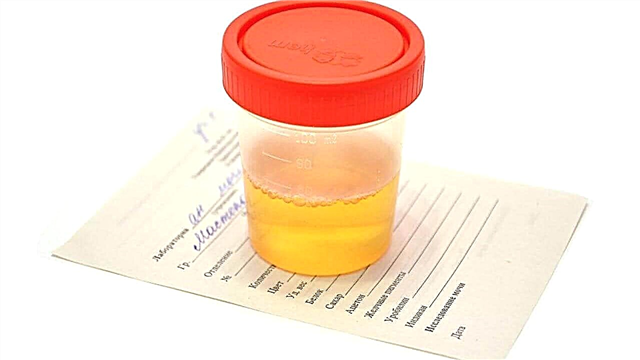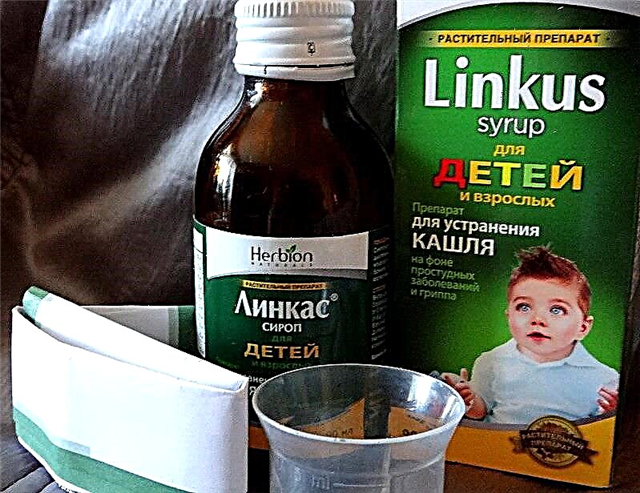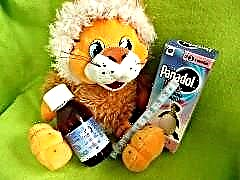
Medicines with antipyretic effects are certainly present in the first-aid kit of families with small children, because elevated body temperature can be called one of the most common symptoms of childhood diseases
Drugs are often used to fight fever in babies paracetamol based, because they are called one of the safest in childhood. The representative of such drugs is Children's Panadol. When is it prescribed to children, in what dosages is it prescribed, is it used in infants and what analogs are it replaced if necessary?

Release form
Children's Panadol, also called Panadol Baby, comes in two forms:
- Suspension. This Panadol is a sweet-tasting syrup-like liquid (because of its viscous consistency, this medicine is often called syrup) with a strawberry aroma and a pink tint. The solution is available in glass bottles and is sold in two volumes - 100 ml and 300 ml. A plastic syringe is attached to the bottle, which helps to accurately measure milliliters of the suspension.
- Rectal suppositories... They are sold in a box of 5 to 20 pieces packed in strips of 5-10 suppositories. These candles have a uniform structure, cone shape and white color. Normally, a candle released from packaging should not have physical defects or any impurities.


Composition
The main ingredient in both forms of Panadol Baby is paracetamol. In suspension, it is contained in a dose of 120 mg / 5 ml, and in one candle - in an amount of 125 mg or 250 mg.
The only additional component of suppositories is solid fat, and liquid Panadol contains many excipients, including maltitol, flavoring, sorbitol, malic acid, azorubin and other compounds. but there is no sugar or alcohol in the suspension.

Operating principle
Paracetamol in the Children's Panadol is able to influence cyclooxygenase. This enzyme, which is found in the cells of the central nervous system, is responsible for the formation of prostaglandins. Its suppression interferes with the synthesis of such substances, with the result that the drug acts on the centers of pain and thermoregulation. This leads to a gradual decrease in temperature and the disappearance of pain.
Compared to other non-steroidal drugs with the same effects, Panadol has almost no anti-inflammatory effect. This medication does not affect the synthesis of prostaglandins, which occurs in peripheral tissues. This causes no harmful effects of the drug on the digestive tract.

Paracetamol is absorbed from the suspension faster than from suppositories. The effect of a liquid drug taken orally begins in about 15-20 minutes, and after the administration of the suppository, the effect develops within 1.5-2 hours. The duration of action of both forms is about 4 hours.

Metabolic transformations of paracetamol take place in the liver, and approximately 90% of this substance leaves the body within 24 hours in the urine.
Indications
The most common reason for using Baby Panadol is an increased body temperature. The medication is given:
- with the flu;
- with rubella;
- with scarlet fever;
- with ARVI;
- with measles;
- with chickenpox;
- with intestinal infection;
- with mumps and other childhood infections;
- when a temperature reaction to vaccination occurs.


Since Panadol is still able to relieve pain, the suspension and suppositories are also used for pain. The drug is in demand for teething, ear pain caused by otitis media, pain due to bruising, pain in the throat due to sore throat, and so on.
At what age are they used?
The suspension is recommended to reduce fever or pain in children over three months of age. This form of Panadol is used from 3 months of age to 12 years.
Babies under 3 months are usually not prescribed it, but it is permissible to give the drug to an infant of 1-3 months in order to reduce the temperature, which was caused by vaccination. However, such a reception should be one-time and only under the supervision of a doctor. If, after one dose, the medication has not brought down the temperature, you cannot give the syrup again.


For babies of the first month of life, the suspension is strictly contraindicated.... The question of using the suspension in children older than 3 months who were born prematurely is decided by the doctor.
Teenagers over 12 years old are also not prescribed a liquid form, since Panadol in 500 mg tablets is more convenient in adolescence.


Panadol suppositories are not used until the age of six months. In this case, candles, which contain 125 mg of the active ingredient, are prescribed for children from 6 months to 2 and a half years, and a drug with a higher dose of paracetamol (250 mg in a candle) is used in patients from 3 to 6 years.
For the use of suppositories, there are still restrictions on weight - a drug with 125 mg is prescribed with a body weight of 8 to 12.5 mg, and 250 mg suppositories are given to children who weigh from 13 to 20 kg.
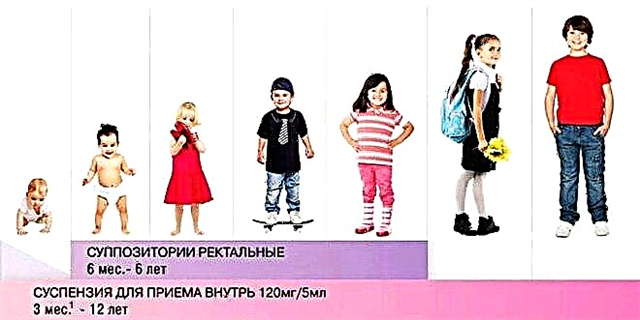
Patients over 6 years old with a body weight of more than 20 kg are not prescribed Panadol in suppositories.
Contraindications
Panadol Baby should not be taken by children:
- with intolerance to paracetamol or another component of the drug;
- with impaired kidney function;
- with a genetically determined absence of glucose 6-phosphate dehydrogenase in the body;
- with severe liver disease;
- with anemia and other blood diseases.
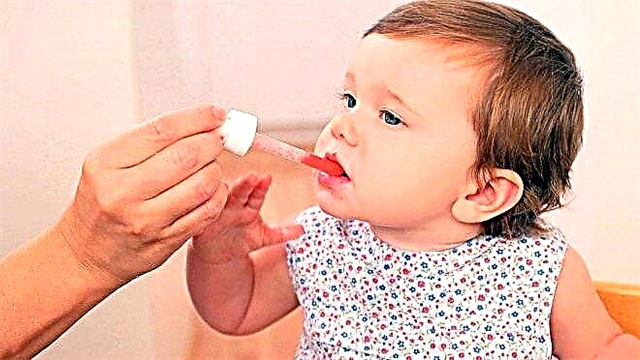
The suspension is also contraindicated in case of fructose intolerance, and suppositories are not used for inflammation of the rectum or bleeding from this part of the intestine.
For adults, while carrying a baby or breastfeeding, take Panadol is not prohibited.

Side effects
Manufacturers warn of the following possible side effects:
- Allergic reactions may occur during treatment with Panadol Baby. In some children, they manifest themselves as rashes, in others - itching or redness of the skin, but in rare cases, it is possible to develop Quincke's edema, urticaria or anaphylactic shock.
- The use of the drug can affect the number of blood cells. A decrease in their number sometimes occurs with prolonged use of Panadol.
- If a child has an increased sensitivity to drugs of the NSAID group, then taking Panadol can cause bronchospasm.
- Very rarely, the medication disrupts the liver or causes negative symptoms from the gastrointestinal tract.


Instructions for use
The drug is used in strict accordance with the instructions in the instructions:
- A single dose of Panadol in suppositories is 1 suppository, and the method of using this medication is rectal.
- Suppositories are inserted in the supine position (it is recommended that the child is on the left side with one leg pulled up to the stomach), gently pushing them into the anus with the index finger.
- Before using suppositories, it is worth waiting for the natural emptying of the intestine or doing an enema so that the drug does not leave the intestine immediately after administration.
- To dispense the suspension, it is recommended to use a measuring syringe, which is sold with the bottle. Before drawing up the solution with a syringe, the bottle must be actively shaken so that all the ingredients are well mixed and distributed evenly.
- The dosage of Panadol liquid is determined based on weight and age. It can be viewed for each specific child in the table, which is on the box, and inside the paper instructions attached to the bottle. Both single doses of the drug and daily doses are noted there.


- In order not to be mistaken with the maximum allowed amount of syrup, it should be calculated by body weight. In childhood, they do not give more than 15 mg of paracetamol per kilogram for intake, and a child can receive a maximum of 60 mg / kg per day.
- The frequency of application of both suspension and suppositories is 3-4 times a day. The drug is allowed to be swallowed or injected into the rectum at intervals of 4-6 hours, but it is prohibited to use Panadol more than four times a day.
- The duration of taking Panadol Baby depends on the reason for its appointment and is adjusted by the doctor. If the child has pain or fever, and there is no way to show the baby to the doctor, it is allowed to use the medication without consultation for no longer than three days.
- If a medicine is prescribed by a doctor for a period of more than 7 days, it is necessary to control the risk of side effects. In particular, with such prolonged use, the child needs to have blood tests and check the functional state of the liver.


Overdose
If you accidentally exceed the dose of Panadol, then on the first day after that, the child will experience abdominal pain, sweating, nausea, pallor, loss of appetite or vomiting. 1-2 days after an overdose, symptoms of liver damage begin to appear.
If the dosage has been exceeded significantly, the drug can worsen carbohydrate metabolism and kidney function, as well as provoke encephalopathy, bleeding, cerebral edema, pancreatitis, arrhythmia and other dangerous conditions.

If there is a suspicion of an overdose, the child should immediately be examined by a doctor and be monitored for at least a day, even with normal health.
If a dose is exceeded within one hour, induce vomiting and give one of the sorbents. In the treatment of overdose use acetylcysteine, methionine and other medicines, and if the child's condition worsens, they are hospitalized.


Compatibility with other drugs
Panadol is not advised to be combined with other antipyretic drugs, unless such treatment is prescribed by a doctor. It is not recommended to combine the intake of such a medicine with many other medicines, including phenytoin, zidovudine, butadione, carbamasemin, metoclopramide and other medicines indicated in the annotation.
If the child is already being given any medications, it is important to clarify their compatibility before prescribing Children's Panadol.

Terms of sale
Both suspension and suppositories for Children's Panadol are sold in pharmacies without a prescription. The average price of a 100 ml bottle is 80-90 rubles, and 10 suppositories cost 50-60 rubles.

Storage conditions
It is recommended to keep Panadol Baby at home at temperatures from 0 to +30 degrees, choosing a dry place for storage, inaccessible to the rays of the sun. The medicine should also not be readily available to children.
The shelf life of candles is 5 years, liquid form - 3 years. If it has expired, the medicine must be discarded.

Reviews
Most of the reviews on the use of both forms of Panadol Baby in children for pain or fever are positive. The main advantages of the drug are called its safety for babies and high efficiency.
Mom's candles are praised for their use in children prone to vomiting to drugs that need to be swallowed. The suspension, according to the parents, is easy to dose and very easy to give to the child, because it tastes good. The cost of the drug is called affordable.

As for the disadvantages, for candles, a late onset of action is considered a disadvantage, since the effect of this form of Panadol develops for at least 1.5 hours. In addition, parents call the duration of action of both forms of the drug too short, which is why sometimes it is necessary to resort to the use of other antipyretic drugs (for example, to alternate Nurofen and Panadol).

Also, many mothers do not like the composition of the suspension, because it contains a flavoring agent, dye and other chemical compounds. In order not to give such substances to small patients, which is especially important for the treatment of infants or children with allergies, you have to use candles.
Adverse reactions to Panadol, judging by the reviews, develop very rarely... Only some children are allergic to the auxiliary components of the syrup or paracetamol intolerance is found. In such cases, they resort to analogs that have the same therapeutic effect.

Analogs
When for some reason it is impossible to give a child Children's Panadol, other medicines can replace it, containing paracetamol.
If you need a liquid form, then a suspension will do. Calpol, syrup or suspension Paracetamol, syrup Efferalgan. Such preparations are sweet in taste, are available in bottles of different sizes and have the same effect as Panadol in suspension. All of them are allowed for children from the age of three months.
If an analogue in candles is required, then you can purchase Efferalgan, Cefekon D or Paracetamol. Such suppositories are produced with different dosages, which allows you to choose the most suitable option for both a baby at the age of 1 month (such crumbs are prescribed Cefekon D or Paracetamol 50 mg), and for a child 3-5 years old (at this age, Efferalgan 300 mg or Paracetamol is used 250 mg) or older.
In a situation where paracetamol cannot be given to a child, ibuprofen preparations are the most popular analogues of Panadol. They are often chosen because of their longer action, because it lasts 6-8 hours after application.
You can replace liquid Panadol with Ibuprofen or Nurofen suspensions, which are allowed from 3 months. Such drugs are also produced in suppositories, prescribed for fever or pain, also from the age of 3 months.

For information on how to calculate the dose of an antipyretic agent for a child, see the next video.

